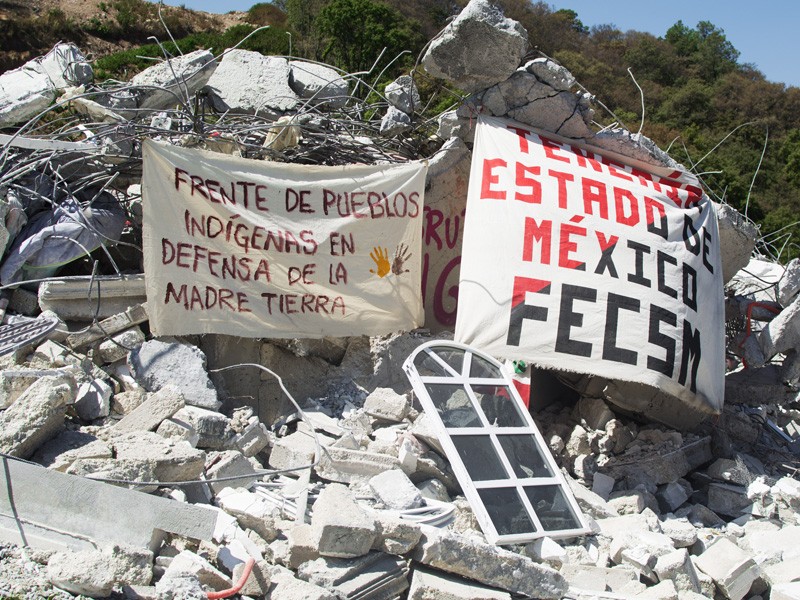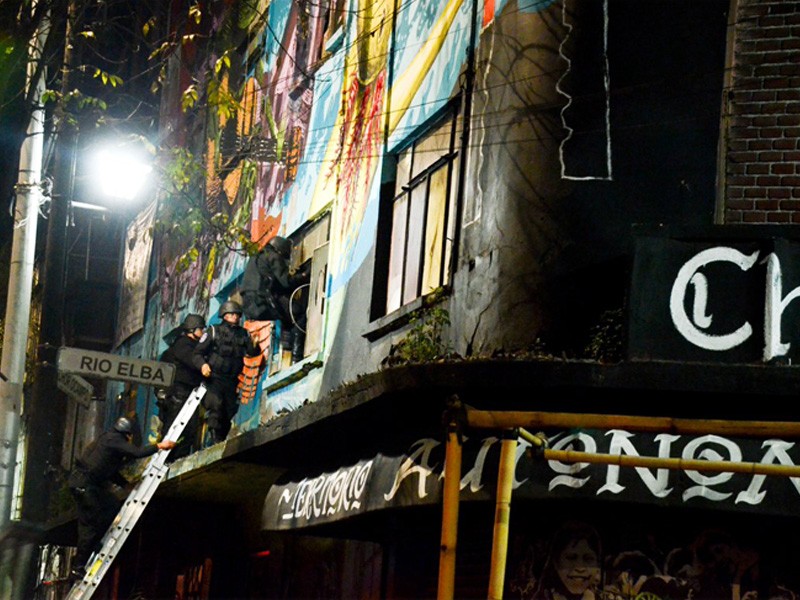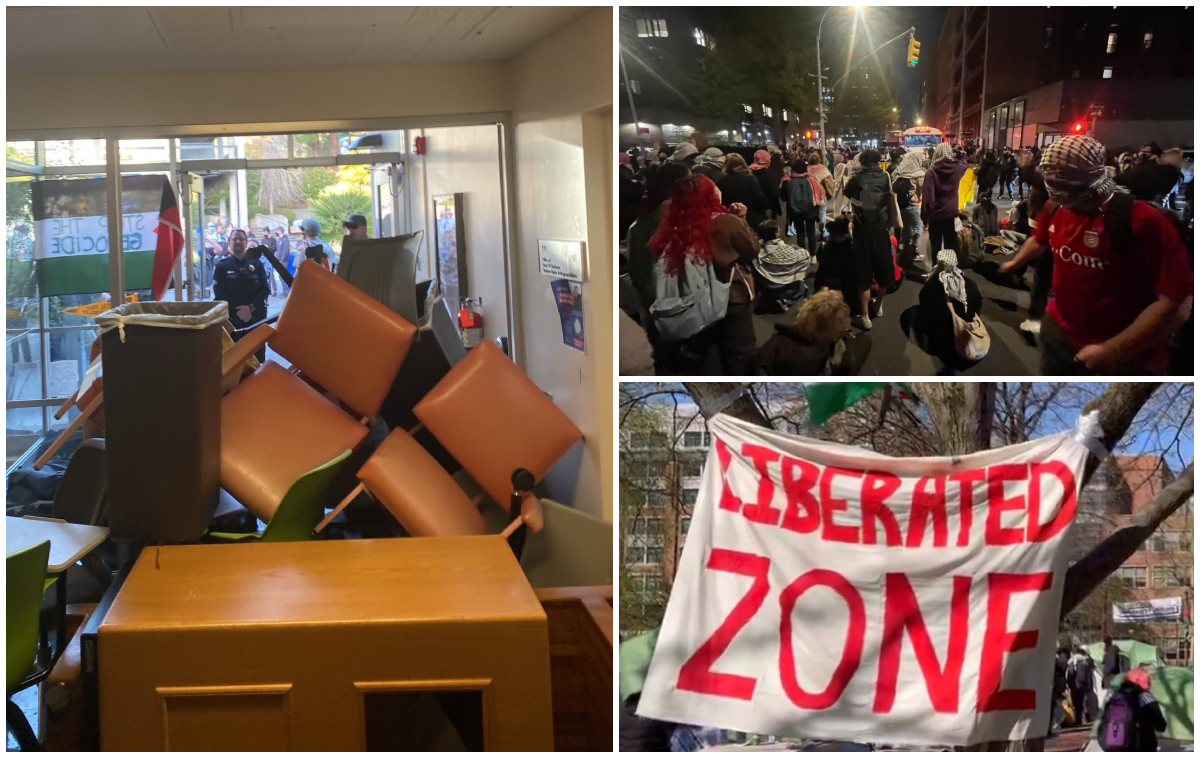Filed under: Mexico

From Regeneración Radio
Translation submitted to It’s Going Down
2016 is over. Remembering is an exercise of collective memory that we should not do without. They want us to forget the atrocities that they have committed. Are we going to fulfill their desire?
1. Forced disappearance, this time in Tierra Blanca, Veracruz
On January 11th, five youths were victims of forced disappearance at the hands of the state police, in the municipality of Tierra Blanca, Veracruz. Four males and one female were abducted by eight police officers in two official police vehicles. According to the version of those detained and the DNA analysis, the youths seemed suspicious so they were detained and transported to a far off place where gunmen tortured them, assassinated them and burned their remains. Again revenge, impunity and terror are the ingredients for the undeniable atrocities such as this one, where the police operations invoke necropolitics.
2. Assassination of Anabel Flores
Anabel Flores Salazar was kidnapped in the state of Veracruz on February 8th and later assassinated. Her body was abandoned February 9th on the Cuacnopalan-Oaxaca highway, located in the state of Puebla. She was the third journalist assassinated in one of the more difficult years for people of this profession who were persecuted by the government of Javier Duarte. In 2012, Duarte paradoxically proposed the creation of a commission of protection of journalists in Veracruz.
3. A Lethal Law in the State of Mexico
On March 17, the law to regulate the use of force in the State of Mexico, also known as the Atenco Law, was approved. The use of firearms, lethal devices, toxic substances, immobilizing devices, the dissolution of meetings, public demonstrations and assemblies are just some of the most dangerous components of this law that even contemplates death at the hands of the police. The State of Mexico is pervaded with mega-projects and dispossession and in consequence there are diverse peoples opposing these projects and defending their origins and territories.
4. The Purple Tide
#24A was a call by women to stop sexist violence. On April 24, women of Mexico City and the State of Mexico took to the streets in a mass political action, a journey of about six hours, kilometers from the center of the municipality of Ecatepec (named by organizations as a hell for women) to the Victoria Alada on Avenue Reforma at the heart of the financial capital of Mexico. The roads, streets, and public transportation were inundated with a purple tide that was filled with rebellious screaming of #vivasnosqueremos to demand the end to street harassment and to expose the femicides that continue as a result of machismo. Twenty-seven states in the republic mobilized beneath the same slogan, radiating #24A as an affront of women, in order to reunite and give account that the violence killing women on a daily basis can only be stopped by unification in struggle.
5. Xochicuautla and the Defense of Territory
In the State of Mexico, the company Grupo Higa demolished the house of one of the residents of the indigenous community of San Francisco Xochicuautla. The demolition was carried out in collusion with hundreds of riot police whom permitted the demolition ignoring the legal protections in place.
The resistance of the Otomí people against the construction of the private highway Toluca-Naucalpan has been active for more than ten years. The house of Dr. Armando García Salazar, named the Castle, was a reference for the community. The house was destroyed without previous notice and the belongings could not be removed. This was a flagrant violation of human rights. In spite of this attack, the resistance-opposition against the highway project continues defending their territory and the thousands of hectares of forest that are proposed to be chopped down.
6. The Teacher’s Movement Explodes in National Strike
On May 15th, after a series of mobilizations, the National Coordinator of Education Workers (CNTE) initiated an indefinite strike to show their rejection of the “education reform” implemented by the Federal Government. If approved, the labor rights of the teachers would eventually disappear and the education would follow the pathway toward privatization. The Mexican people showed their solidarity and support, creating committees of parents of families, carrying out permanent closures of highway and avenues, demonstrating in schools, and providing moral and material support to the encampments installed in Chiapas, Guerrero, Oaxaca, and Michoacán that during the year were subject to constant harassment.
7. Massacre in Nochixtlán, Oaxaca
On the morning of June 19th, the Secretary of Public Security of Oaxaca (SSP-O) and the Federal Police (PF) carried out a joint attack to evict the road blockade in Nochixtlán that was maintained by students, teachers, and citizens. The result was twelve assassinated, twenty-seven arrested, seven disappeared, and forty-five injured, thirty-seven due to bullets from a firearm.
More than 800 members of the Federal Police arrived to Nochixtlán at eight in the morning on June 19th. The first aggressions were carried out with tear gas and rubber bullets. The Mixteca population managed to fend off the attack with sticks, stones, and the principal characteristic running through their veins: Oaxacan resistance.
8. Ayotzinapa: A Reward for the Guilty
On September 14, Tomás Zerón—an official accused of planting evidence in the Ayotzinapa case—was removed from the criminal investigation agency of the PGR. The president of the country immediately granted him a higher position in the National Security Counsel. Zerón was accused on innumerable occasions by the fathers of the 43 disappeared of Ayotzinapa of having fabricated the official history, based on irregularities and testimonies of tortured people. For the families of the victims, the promotion of this person was a setback in the search for truth and justice after two years of not knowing the exact location of their children.
9. Gentrification: The Eviction of the Autonomous-Cultural Space
On November 22, the autonomous space Chanti Ollin (house in movement) was evicted by the police forces of Miguel Ángel Mancera with an operation of more than 800 riot police who detained twenty-three people who were freed shortly after. On the inside, the space hosted a great diversity of health, education, sustainable energy and self-management projects, organizing one of the few alternatives to development and construction in Mexico City. This was a clear example of the displacement that is lived in the cities.
10. Real Estate Speculation in Mexico City: Encampment in the Pedegrales
In the early morning of December 5th, the warning of the Mexico City government and the real estate project “Quiero Casa” was realized. The eviction took place of the encampment in defense of the fresh water spring located on Av. Aztecas #215 in the Pedegrales of Coyoacán in the south of the capital city. Despite the obvious ecocide that the real estate company will commit by destroying the spring and the ancestral territory of the people, the government did not order the cancellation of the project. The neighbors had installed an indefinite encampment halting construction of the building and damage to the aquifer for more than half of the year. The manner of these eviction operations demonstrate the ties of corruption and power intent on dispossessing the people in this city, not only of their territory but also of the fundamental natural resources that supply the entire metropolitan area.







